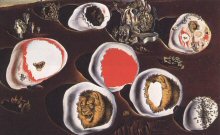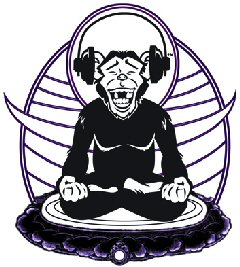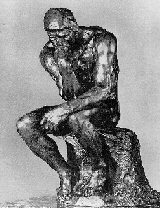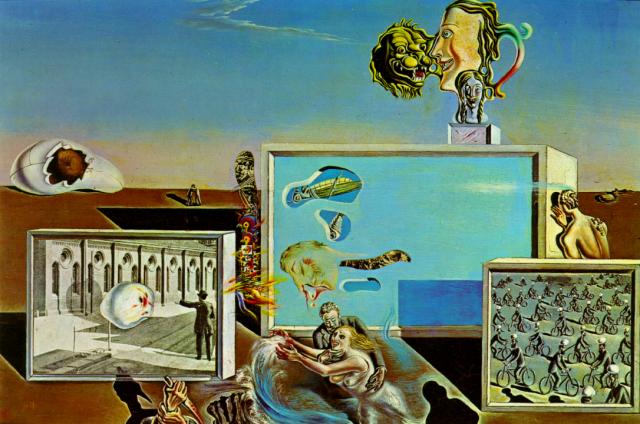 [en]
[en]
I was browsing my bookmarks accumulated over a couple of years, both on the browser and in sites devoted to saving and organizing them. Like many people, I added bookmarks as pointers to pages which are interesting to read but reading which I postponed or for pages I’d already read which I wished to keep for some still not clear future use.
At the time when I added the bookmarks, the pages seemed revealing or interesting and the themes involved worth pursuing more deeply. Then just a few of them had the same appeal after some time. Looks like the mind’s creativity, in order to develop something, has to fecundate many ideas, as in pro-creativity where just one sperm cell among millions will fuse with the ovule.
It was revealing to see how mental interests have a transitory nature, how we can get driven by them, how we go to a certain extent following their path and then drop them. Meditation practices are about being aware of the mind’s addiction with thoughts and then coming back to concentrating on something, for instance on the breath. In meditation we can be taken away by any kind of thought and it can take some time before we become aware that we have been hijacked and taken far from our concentration. The very awareness of being sidetracked is somehow the essence of meditation.
Satprem quotes Mère on the mind’s nature saying, “They are [a] world of suggestions. There come[s] the wave of a suggestion and then everything is frightening, then the wave of another suggestion and everything is romantic, then another one and everything is beautiful.”
When we are on the Internet the structure of links is a metaphor of the mind’s functioning which jumps from one branch to another. But when we are following mental stimulations on the Net we are not in a meditation practice and we have more difficulties in focusing internally and in letting go of the mind’s suggestions. Internet technology has a peculiar way of feeding the attachment to mental material.
At the same time there are mechanisms to simulate the detachments of the same, for instance through sharing our “own” bookmarks with others in social networks or letting our writings wander around on the Web. But what’s different with a real letting go is that we get detached from one mental stimulation to go to another, and never come back to the observing awareness which can drive us back to our center.
Since the mind’s contents are transitory in themselves, we can easily understand why Web sites and Web applications have a transitory nature as well. What was hip and “wired” a few months earlier quickly becomes “tired.” We know that once the novelty is gone, neurophysiologically, we don’t get the same “high” as before. Becoming interested in anything new is an ancient mechanism of our nervous system which rewards our attention to novelties that could be potentially threatening.
The process of digitalization of reality includes more and more human activities, among them connections with people through social networks and dating sites. I wonder if this attitude of being interested in something and then being pulled in other directions, always for something “new” is leading to considering human beings as another mental whim, given the number of “friends” people have in social sites and the ease with which they can add or delete them.
Object relations psychology tells us that we project our emotional relationships on other people and even on objects, and it seems that the online world is well suited to feeding mental projections on others, since we have less reality checks and our imagination can go unobstructed.
[/en][it]
Stavo navigando tra i bookmark che avevo accumulato negli ultimi due anni, sia quelli salvati sul browser che sui siti dedicati al salvataggio dei bookmarksi. Come molte altre persone, mettevo un bookmark sulle pagine che mi sembravano interessanti, ma che avrei letto in un secondo momento, oppure su quelle che avevo già letto e che pensavo mi sarebbero servite, in qualche modo non ancora ben definito, in futuro.
Quando inserivo i bookmark, le pagine sembravano interessanti, originali e meritevoli di approfondimento, ma dopo un po’ di tempo ben poche di esse conservavano la stessa attrazione. Sembra che la creatività della mente, per sviluppare qualcosa, abbia bisogno di fecondare molte idee, un po’ come nella “pro-creatività”, in cui un solo spermatozoo, tra milioni, riesce a fecondare l’ovulo.
Vedere quanto siano momentanei gli interessi della mente è stata una rivelazione: ci lasciamo prendere da essi, li seguiamo per un po’ e quindi li abbandoniamo. Le pratiche di meditazione richiedono il divenire consapevoli della dipendenza della mente dai pensieri e quindi il tornare a concentrarsi su qualcosa, per esempio sul respiro. Nella meditazione possiamo lasciarci distrarre da qualsiasi tipo di pensiero, e possiamo anche avere bisogno di molto tempo prima di renderci conto di essere stati “dirottati” e allontanati dal nostro oggetto di concentrazione. La consapevolezza stessa che siamo stati sviati è in un certo senso l’essenza della meditazione.
Citando Mère sulla natura della mente, Satprem dice: “Esistono universi interi di stimoli. Arriva l’ondata di un certo stimolo e tremiamo di paura, poi un’altra ondata e tutto sembra romantico, quindi un’altra ancora e ogni cosa pare meravigliosa”.
Quando siamo in Internet, la struttura dei link è una metafora del funzionamento della mente, che salta da un ramo all’altro. Ma quando seguiamo gli stimoli mentali in Rete, abbiamo più difficoltà a focalizzarci interiormente, come invece accade in meditazione, e a lasciare andare gli stimoli. Internet alimentare in modo unico e speciale l’attaccamento ai contenuti mentali.
Allo stesso tempo, esistono meccanismi per stimolare-simulare il distacco dagli stessi contenuti, per esempio attraverso la condivisione dei nostri bookmark nei network sociali o lasciando che i nostri scritti vaghino nel web. La differenza rispetto a un distacco autentico, tuttavia, è nel fatto che in rete abbandoniamo un attaccamento mentale per sceglierne un altro, senza mai fare ritorno a quella consapevolezza osservatrice che può riportarci al nostro centro.
Dal momento che i contenuti mentali sono transitori in sé, possiamo capire senza difficoltà perché anche i siti e le applicazioni web hanno natura transitoria. Ciò che in un dato momento è alla moda e interessante, dopo pochi mesi diventa obsoleto. Sappiamo che, una volta esauritasi la sensazione di novità, dal punto di vista neurofisiologico non sperimentiamo più le stesse emozioni di prima. Acquisire interesse verso le novità è un antico meccanismo del nostro sistema nervoso, il quale ricompensa l’attenzione verso le novità che potrebbero essere potenzialmente pericolose.
Il processo della digitalizzazione della realtà include sempre più attività umane, tra cui le relazioni interpersonali attraverso i network sociali e i siti di incontri. Mi chiedo se questo atteggiamento di attrazione verso le novità, con la loro rapida sostituzione non appena diventino obsolete, ci porto alla concezione anche degli esseri umani come di un ennesimo capriccio mentale, data la quantità di “amicizie” che nascono nei siti sociali e la facilità con cui queste ultime vengono create e cancellate.
La psicologia delle relazioni oggettuali ci dice che noi proiettiamo le nostre relazioni emozionali sulle persone e persino sugli oggetti, e sembra che l’universo online faciliti in modo particolare le proiezioni mentali sugli altri, perché abbiamo meno possibilità di riscontri con la realtà e la nostra immaginazione può procedere senza ostacoli.
[/it]

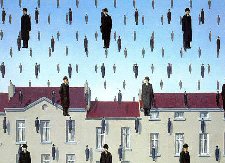

 [en]
[en]